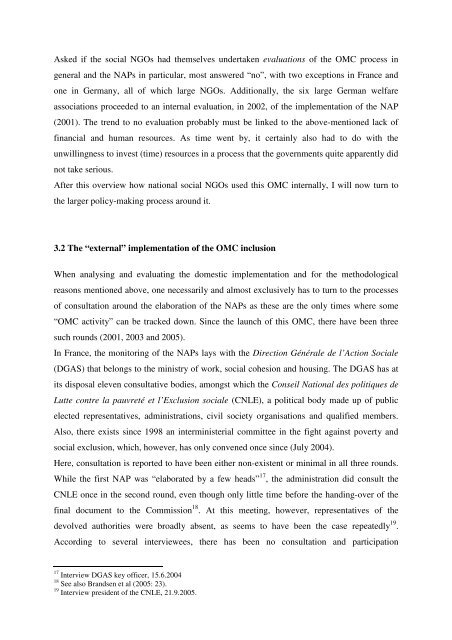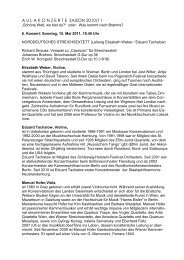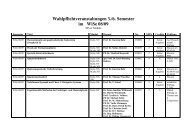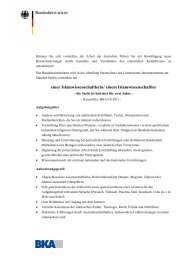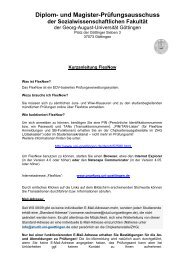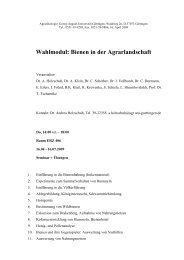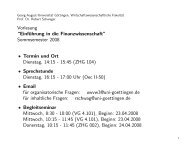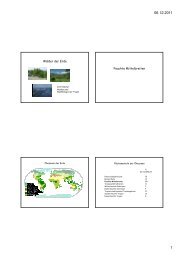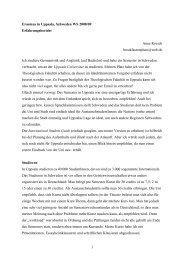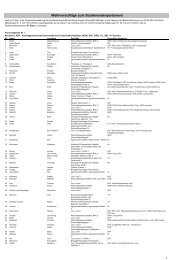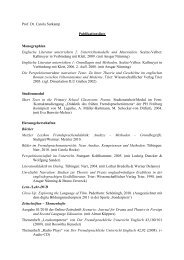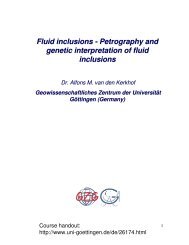Asked if the <strong>social</strong> <strong>NGOs</strong> had themselves undertaken evaluations of the <strong>OMC</strong> process ingeneral <strong>and</strong> the NAPs in particular, most answered “no”, with two exceptions in France <strong>and</strong>one in Germany, all of which large <strong>NGOs</strong>. Additionally, the six large German welfareassociations proceeded <strong>to</strong> an internal evaluation, in 2002, of the implementation of the NAP(2001). <strong>The</strong> trend <strong>to</strong> no evaluation probably must be linked <strong>to</strong> the above-mentioned lack offinancial <strong>and</strong> human resources. As time went by, it certainly also had <strong>to</strong> do with theunwillingness <strong>to</strong> invest (time) resources in a process that the governments quite apparently didnot take serious.After this overview how <strong>national</strong> <strong>social</strong> <strong>NGOs</strong> used this <strong>OMC</strong> internally, I will now turn <strong>to</strong>the larger policy-making process around it.3.2 <strong>The</strong> “external” implementation of the <strong>OMC</strong> <strong>inclusion</strong>When analysing <strong>and</strong> evaluating the domestic implementation <strong>and</strong> for the methodologicalreasons mentioned above, one necessarily <strong>and</strong> almost exclusively has <strong>to</strong> turn <strong>to</strong> the processesof consultation around the elaboration of the NAPs as these are the only times where some“<strong>OMC</strong> activity” can be tracked down. Since the launch of this <strong>OMC</strong>, there have been threesuch rounds (2001, 2003 <strong>and</strong> 2005).In France, the moni<strong>to</strong>ring of the NAPs lays with the Direction Générale de l’Action Sociale(DGAS) that belongs <strong>to</strong> the ministry of work, <strong>social</strong> cohesion <strong>and</strong> housing. <strong>The</strong> DGAS has atits disposal eleven consultative bodies, amongst which the Conseil National des politiques deLutte contre la pauvreté et l’Exclusion <strong>social</strong>e (CNLE), a political body made up of publicelected representatives, administrations, civil society organisations <strong>and</strong> qualified members.Also, there exists since 1998 an interministerial committee in the fight against poverty <strong>and</strong><strong>social</strong> exclusion, which, however, has only convened once since (July 2004).Here, consultation is reported <strong>to</strong> have been either non-existent or minimal in all three rounds.While the first NAP was “elaborated by a few heads” 17 , the administration did consult theCNLE once in the second round, even though only little time before the h<strong>and</strong>ing-over of thefinal document <strong>to</strong> the Commission 18 . At this meeting, however, representatives of thedevolved authorities were broadly absent, as seems <strong>to</strong> have been the case repeatedly 19 .According <strong>to</strong> several interviewees, there has been no consultation <strong>and</strong> participation17 Interview DGAS key officer, 15.6.200418 See also Br<strong>and</strong>sen et al (2005: 23).19 Interview president of the CNLE, 21.9.2005.
whatsoever of the regions, départements <strong>and</strong> local communities 20 . Since the delegation ofcompetencies <strong>to</strong> the départements in the <strong>social</strong> field, in January 2004, one could expect agreater involvement of the respective authorities in the process – due <strong>to</strong> political opposition,this did not happen so far. <strong>The</strong> last exercise, in 2005, seems <strong>to</strong> have followed the samepattern. Interviewees reported that in 2005, the exercise had been even more formal than in2003, the meeting mainly being a presentation of the Plan de cohésion <strong>social</strong>e, presented inspring 2005. <strong>The</strong> French government does not foresee parliamentarian debate of the NAPs(see also Legros 2005).Besides the consultation process directly linked <strong>to</strong> the elaboration of the NAPs, there havebeen in France a number of initiatives where it is hard <strong>to</strong> tell whether they can be drawn back<strong>to</strong> the <strong>OMC</strong> <strong>inclusion</strong>, even though involved ac<strong>to</strong>rs claim a direct connection. In December2003, the then in place Prime Minister Raffarin received a delegation of <strong>NGOs</strong> in order <strong>to</strong>learn about their concerns. At this meeting, the participants agreed that there should be a first<strong>national</strong> conference on poverty <strong>and</strong> <strong>social</strong> exclusion, <strong>to</strong> be continued on an annual rhythm.This conference <strong>to</strong>ok place in July 2004 <strong>and</strong> gathered, amongst others, all the ministersconcerned. It was directly after the conference that the interministerial committee against<strong>social</strong> exclusion convened for the first time. <strong>The</strong> second “annual” conference <strong>to</strong>ok place inApril 2006. Another rather recent development has been the decision <strong>to</strong> create a text called“document de politique transversale <strong>inclusion</strong> <strong>social</strong>e” (DPT) in the context of the financialact, which regulates the yearly state budget 21 . Finally, the unit in charge of the <strong>OMC</strong> at theDGAS has commissioned an office with the development of an measurement system of theimpacts of the policies in the fight against <strong>social</strong> exclusion on their recipients, which wash<strong>and</strong>ed over in September 2005.<strong>The</strong> German government’s position <strong>to</strong>wards the <strong>OMC</strong> <strong>inclusion</strong> cannot be called but sceptical(see also Huster et al. 2004). <strong>The</strong>re is a profound mistrust that the Commission is slowly butsurely seeking <strong>to</strong> extend its competencies in the area of <strong>social</strong> policies, an idea that is <strong>to</strong>tally<strong>and</strong> repeatedly rejected: „<strong>The</strong> <strong>OMC</strong> holds risks for the protection of <strong>national</strong> competencies. Itshould not mutate <strong>to</strong> a vehicle for system comparison but help <strong>to</strong> find answers for concretequestions. <strong>The</strong> ministry refuses an inflation of common objectives <strong>and</strong> indica<strong>to</strong>rs. It should be20 In 2003, this may be explained by the fact that the main competencies in the <strong>social</strong> field still led with thecentral government, whereas main competencies were shifted <strong>to</strong> the départements <strong>and</strong> local communities as fromJanuary 2004 on.21 Namely the Loi Organique relative aux Lois de Finances (LOLF), an act dating back <strong>to</strong> 1959 <strong>and</strong> revised since2005. In France, there are currently eight such documents in different policy areas; their aim is <strong>to</strong> facilitate <strong>and</strong>improve interministerial cooperation.


